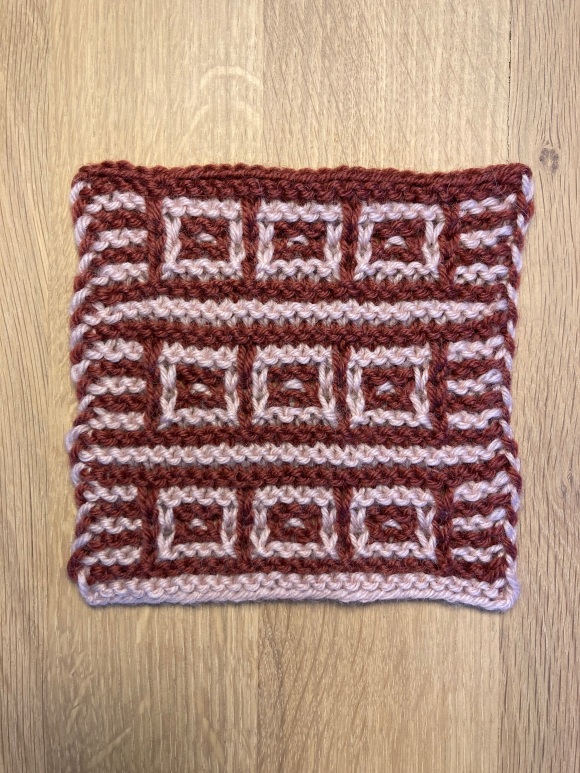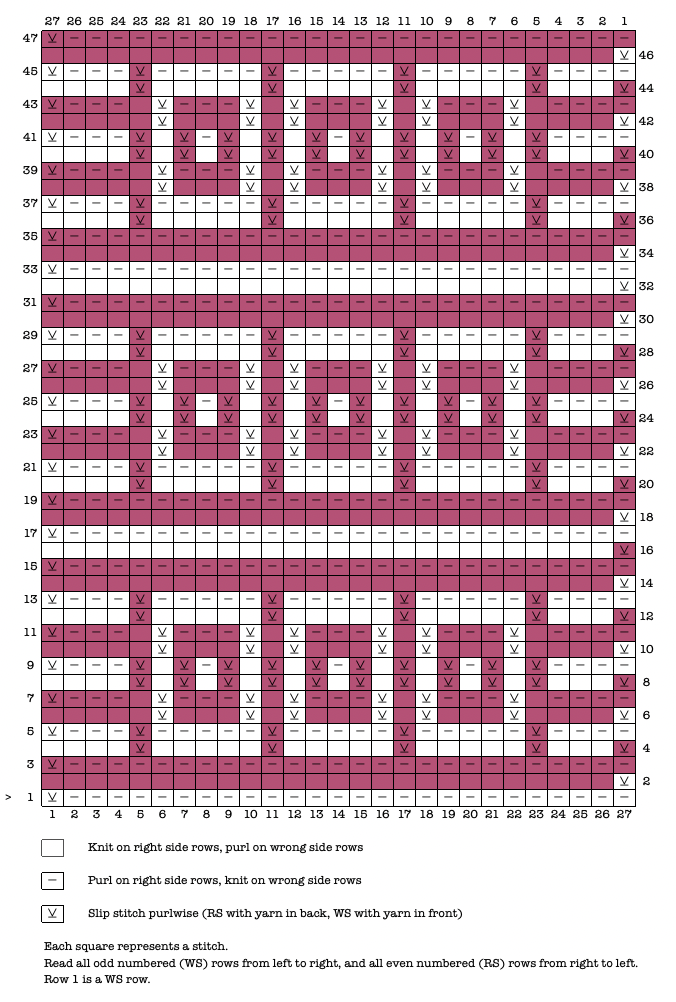How to knit patterns in mosaic knitting

Mosaic knitting utilises slipped stitches to form colourwork patterns. The advantage of this technique is that, unlike stranded knitting, you only work with one colour in every row.
On right side rows, stitches are slipped purlwise with the yarn in the back (wyib).
On wrong side rows, stitches are slipped purlwise with the yarn in front (wyif).
This way the strands are always on the wrong side of the work.
You already know how to
- cast on
- knit
- cast off
- slip the first stitch purlwise
- knit horizontal stripes
- purl
- follow a knitting pattern containing abbreviations
- read a chart
New abbreviations
- wyib: with the yarn in the back
- wyif: with the yarn in front
Instructions
Using LC, cast on 27 sts.
Row 1 (WS): Sl1p, k26.
Rows 2 and 3: With DC, sl1p, k26.
Row 4 (RS): With LC, sl1p, k3, [sl1p wyib, k5] 3 times, sl1p wyib, k4.
Row 5 (WS): With LC, sl1p, k3, [sl1p wyif, k5] 3 times, sl1p wyif, k4.
Row 6 (RS): With DC, sl1p, k4, [sl1p wyib, k3, sl1p wyib, k1] 3 times, k4.
Row 7 (WS): With DC, sl1p, k3, [p1, sl1p wyif, k3, sl1p wyif] 3 times, p1, k4.
Continue according to chart changing colour every 2 rows.
Cast off and weave in ends.

Anna’s tips 😉
You may remember that I like to weave in the very first end in advance. When possible ☝️, I also like to do that when I join a new colour.
Why haven’t I mentioned it before, so you didn’t have to weave in all the loose ends in the colourwork and intarsia squares? The truth is that this technique does not work well when you have a colour change in the middle of a row as in stranded knitting or intarsia. But it works fine when the colour change is at the beginning of a row, as it is here.
If you successfully completed this square, you have learned how to
- knit patterns in mosaic knitting
